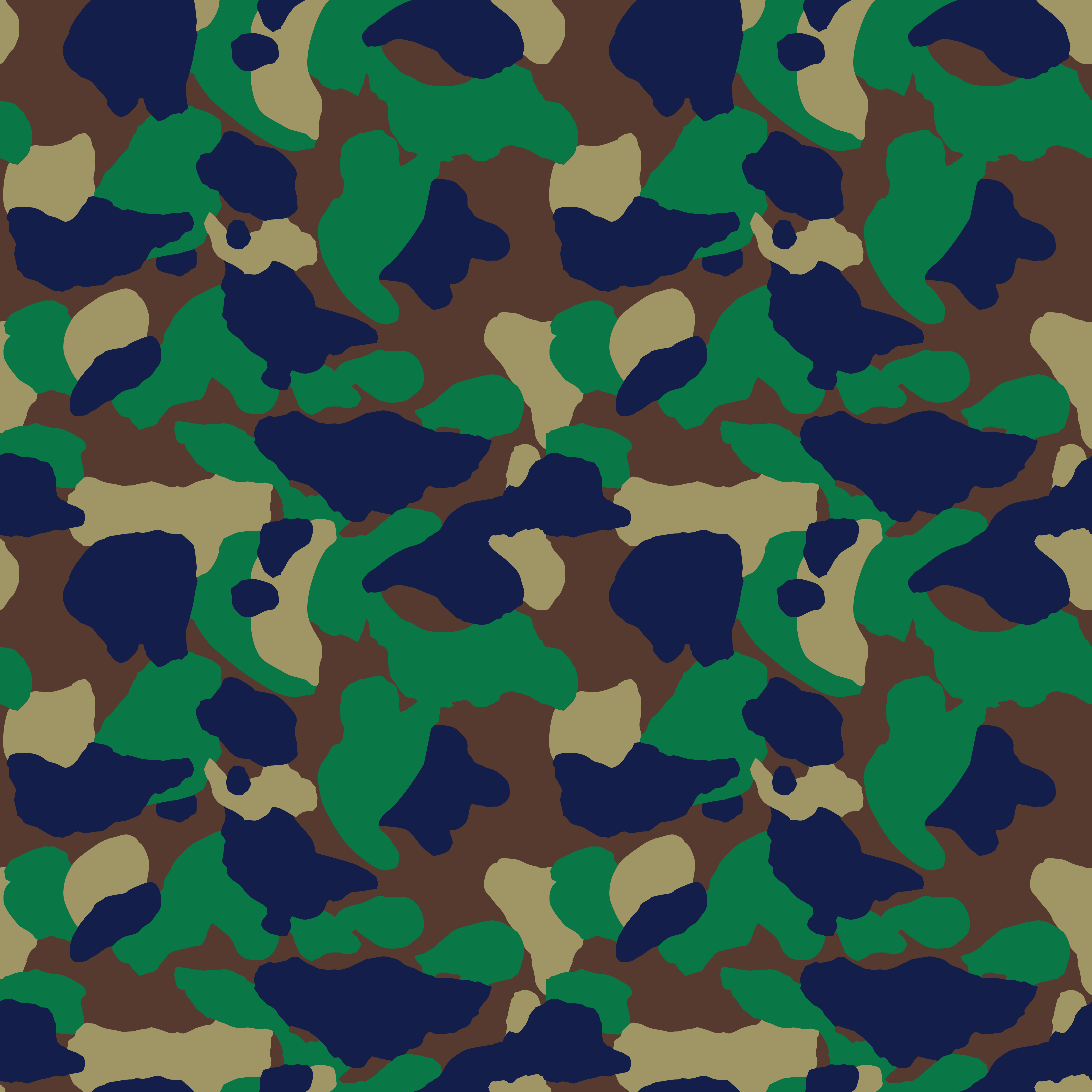

When you're done, change the Image Size again, making it 4500 px wide and 1750 px high. Repeat the previous steps to create the sand-colored splotches. Double-click the Clouds effect to generate new splotches, adjust the Threshold to separate them, and change the distance of the Motion Blur to make the edges more detailed. Show the group again and change the settings to create smaller, more separated splotches. The other splotches need to be smaller, so go to Image > Image Size and change the Width to 3000 px. If there's a lot of space between some of the splotches, it's best to keep them near the center of the canvas. Select Wrap Around and play with the settings to achieve the effect you like. Let's make this pattern seamless now! Go to Filter > Other > Offset. Press Control-T, and then drag the sides of the image to the edges of the canvas without actually crossing them. Fill it with brown, and then deselect with Control-D. Select the background layer and create a New Layer. Go back to the Layers tab and hide the group. Go to the Channels tab, hold the Control key, and click the thumbnail of the first layer. Select both layers and press Control-G to group them. Adjust the Distance to achieve the level of detail you need. Go back to the layer below, and go to Filter > Blur > Motion Blur.

Adjust the level to create a couple of big splotches. Go to the Adjustments panel and select Threshold. Select the actual thumbnail of the layer now. This layer mask will stop the splotches from being generated across the edge. In the Properties panel, set the Feather to about 50%. Press Control-T and in the upper bar change the dimensions to 90%. Add a Layer Mask to this layer, fill the Layer mask with black, and click the chain link icon next to it. Right-click the layer and select Convert to Smart Object. Step 3Ĭreate a New Layer, press D, and use the Paint Bucket Tool again. Take the Paint Bucket Tool (G) and fill the background with green. You can add these colors to swatches to have a handy set for your future projects Step 2Ĭreate a New File with dimensions of 1500 x 1000 px.
#Camouflage patterns free
We're going to need the following colors:įeel free to use different shades of these four colors to create the level of contrast you prefer. We need to prepare the color swatches first.
#Camouflage patterns how to
In this section, I'll show you how to paint camouflage patterns in the woodland style! Step 1 The woodland pattern is the most popular one-it's supposed to imitate the leaves, branches, shadows, and highlights of a forest. Design Your Own Camouflage Pattern in Photoshopġ.


 0 kommentar(er)
0 kommentar(er)
